To coincide with Marta Ravasi’s first solo exhibition in Paris at the gallery in July, and the first collaboration between the artist and the gallery, Marta and I talked about her artistic practice in an interview.
Marta Ravasi is an Italian painter born in 1987 in the Northern part of Italy. The artist studied at the Brera Fine Arts Academy in Milan, the Hogeschool Sint Lukas in Brussels and Wimbledon College of Arts in London. She now lives and works in Milan.
In talking with the artist and looking at her work, the question of time and the light run through her work and seem essential to understanding it. Her chosen subjects are part of the long tradition of the still life genre (flowers, fruit, etc.) and are never accompanied by or bearing indications of a specific period. There is nothing that takes us back to our own time or place. They transcend time and will continue to do so, thanks to the universality of their subjects, which bring viewers together. Especially as for the artist the subjects are a pretext for painting to constantly question the pictorial medium, as well as the free surface and the relationship between subject and background. The subjects are then explored in different ways, as repetition allows the pictorial research of the same motif on the same surface to evolve, offering multiple variations and subtleties. The particularity of the artist’s work is to make a painting evolve over different periods of time, to pursue it by moving it in the creative space that will change the way it receives the light. The painting will thus bear the marks of time, of its different moments of creation through the different layers of colour received over the course of creation. The result is a highly textured, tactile aspect to her paintings, in a subtle cameo of colours thanks to her meticulous use of light.
Finally, her pretextual subjects are also a way for the artist to materialise a more abstract space-time: what happens when she paints, a unique, personal, even hazardous time.
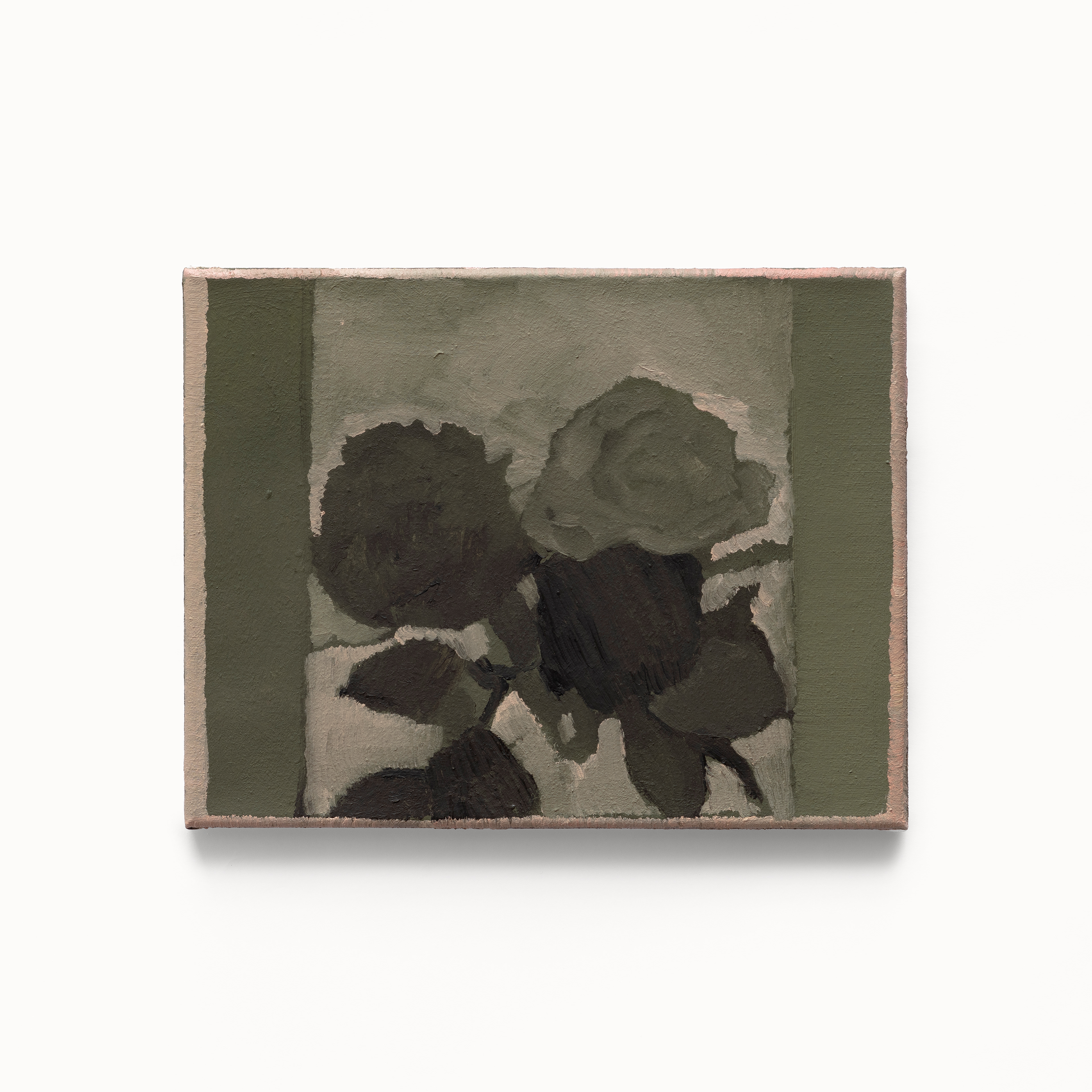
Marta Ravasi, Fiori, 2020, oil on canvas, 24 x 31 cm / Courtesy of the artist and Galleria Acappella.
"I mainly but not only paint still-life. The subject is in fact an excuse, the opportunity to paint again; it allows me to reflect on certain aspects of painting."
Marta Ravasi
Elsa Meunier : Can you introduce yourself? (Short bio, career path, what determined your choice to devote yourself to your artistic practice).
Marta Ravasi : I was born in 1987, in the Northern part of Italy, near Lecco, on the Lake of Como in 1987.
My deep interest in exploring the inner world and understanding its manifestations has always drawn me in. This curiosity has led me to various forms of expression, including the written and spoken word, movement, drawing, and painting—art in all its forms.
My deep interest in exploring the inner world and understanding its manifestations has always drawn me in. This curiosity has led me to various forms of expression, including the written and spoken word, movement, drawing, and painting—art in all its forms.
My academic journey followed a traditional path, with studies at the Brera Fine Arts Academy in Milan, the Hogeschool Sint Lukas in Brussels, and the Wimbledon College of Arts in London. While this “wandering” was partly a response to not finding a fulfilling situation, it also enriched my research by exposing me to different environments, contexts, and approaches.
In 2017, I had my first solo exhibition at Fanta-MLN in Milan, which gave me the opportunity—something I will always be grateful for—to explore my initial ideas on painting. These works, a series of nine paintings displayed in their original space, still feel fresh and radical to me. I also collaborate with the Neapolitan gallery Acappella, led by Corrado Folinea, whose research I greatly admire. This relationship has allowed me to develop a cohesive and continuous body of work.
E.M : You paint still-life. Most of your motifs are flowers, fruits and sometimes insects. They are objects, elements from our familiar, everyday environment. Are they deliberately chosen objects/elements that you live with and paint? Or are they objects/elements chosen from various places and which, in some way, convey the atmosphere of the spaces you pass through?
M.R. : I mainly but not only paint still-life. The subject is in fact an excuse, the opportunity to paint again; it allows me to reflect on certain aspects of painting. In recent years, I have focused on the surface, the relationship between subject and background, geometry, and the interplay between the space of the canvas and its content. These reflections are not presented in a direct or didactic manner but form the foundation of what I would describe as representation.
When I mentioned “inner thought” earlier, I was referring to using a visual starting point or pictorial pretext, if you like— such as a fruit or a flower—to express something tied to an internal moment that only exists in the present of painting. It’s a process that pushes outward, even though it often feels more like digging. It’s as if I'm trying to shape a material that is inherently chaotic, indistinct, fluid, and changeable—qualities that I still struggle to control.
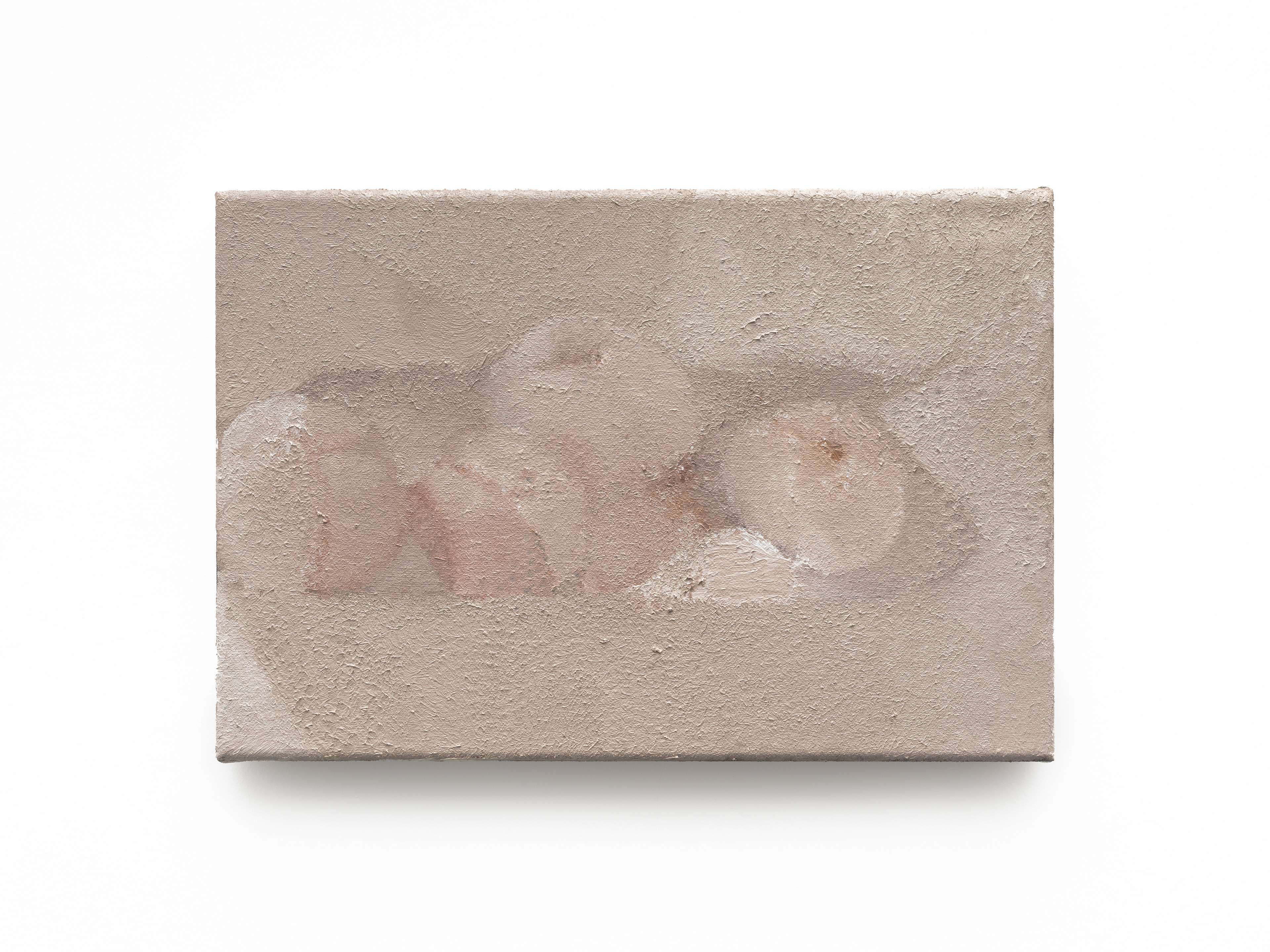
Marta Ravasi, Natura morta, 2025, oil on canvas, 21 x 31 cm/ Courtesy of the artist and Galleria Acappella.
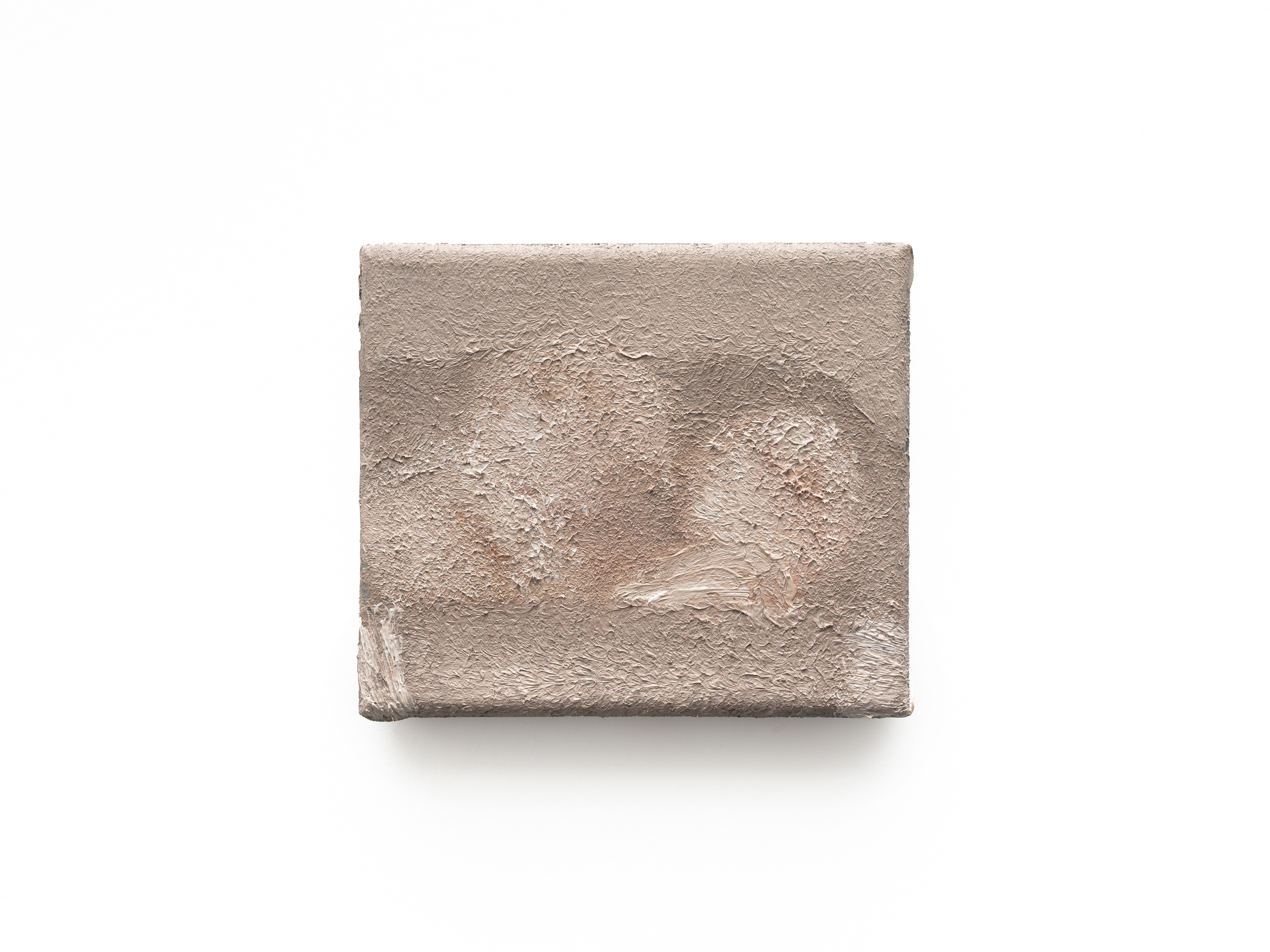
Marta Ravasi Fruttini bianchi, 2025, oil on canvas, 11 x 13 cm / Courtesy of the artist and Galleria Acappella.
E.M. : What is remarkable about your work is its highly textured, tactile aspect. The illusion of the relief is given by the thickness of the layers of paint. But the objects/elements are flattened out, the background and the shape are on the same plane. The motifs depicted seem to disappear into the material. Sometimes only the outlines remain.
Can you tell us about this choice of representation?
Can you tell us about this choice of representation?
M. R. : Working with the subject and its background feels like filling a flat, two-dimensional surface—a void that becomes filled, manifesting something, a moment. Often, the material takes control and becomes thick, causing me to lose track of my intention as the painting unfolds almost by itself. This exploration was the focus of my 2023 exhibition “Bucce” at Galleria Acappella, where I presented works dedicated to the skins of flowers, fruits, and even the canvas itself.
When the paintings have small dimensions (the smallest measure 11 x 13 cm) the surfaces become thicker, and the textures are varied and intricate. This is achieved through repeated, directional wrist movements that create overlapping marks. In In these smaller works, the subjects are contained within the canvas’s perimeter. As the size of the painting increases, however, the thickness of the painted surface decreases, and the subject appears freer and more fluid, positioned more lightly within the space.
E.M. : Most of your work has a restricted palette, each piece is painted in a cameo of color. This choice of color accentuates the difficulty of distinguishing the motif from the background. I am thinking in particular of the painting titled “Falena” (2021). Can you tell us about these chromatic choices?
M.R. : The surfaces are painted multiple times, and it is interesting to me to see the marks of my fingers on the edges of the stretcher bars. These marks result from moving the canvas around the studio, hanging it on different walls to follow the light in the space. This is the only reason why I never display my paintings framed. These traces define the layers of paint and the various days of labor dedicated to developing a work. At the end of the session if the painting is not finished, the color is pulled, mixed and merged with the previous layers leaving a uniform, moist surface ready to begin again the next day. This process gives rise to a specific color a warm, medium-toned base that allows for lighter and darker areas. Each work has its own chromatic identity that is often unitary and compact, but things can change.
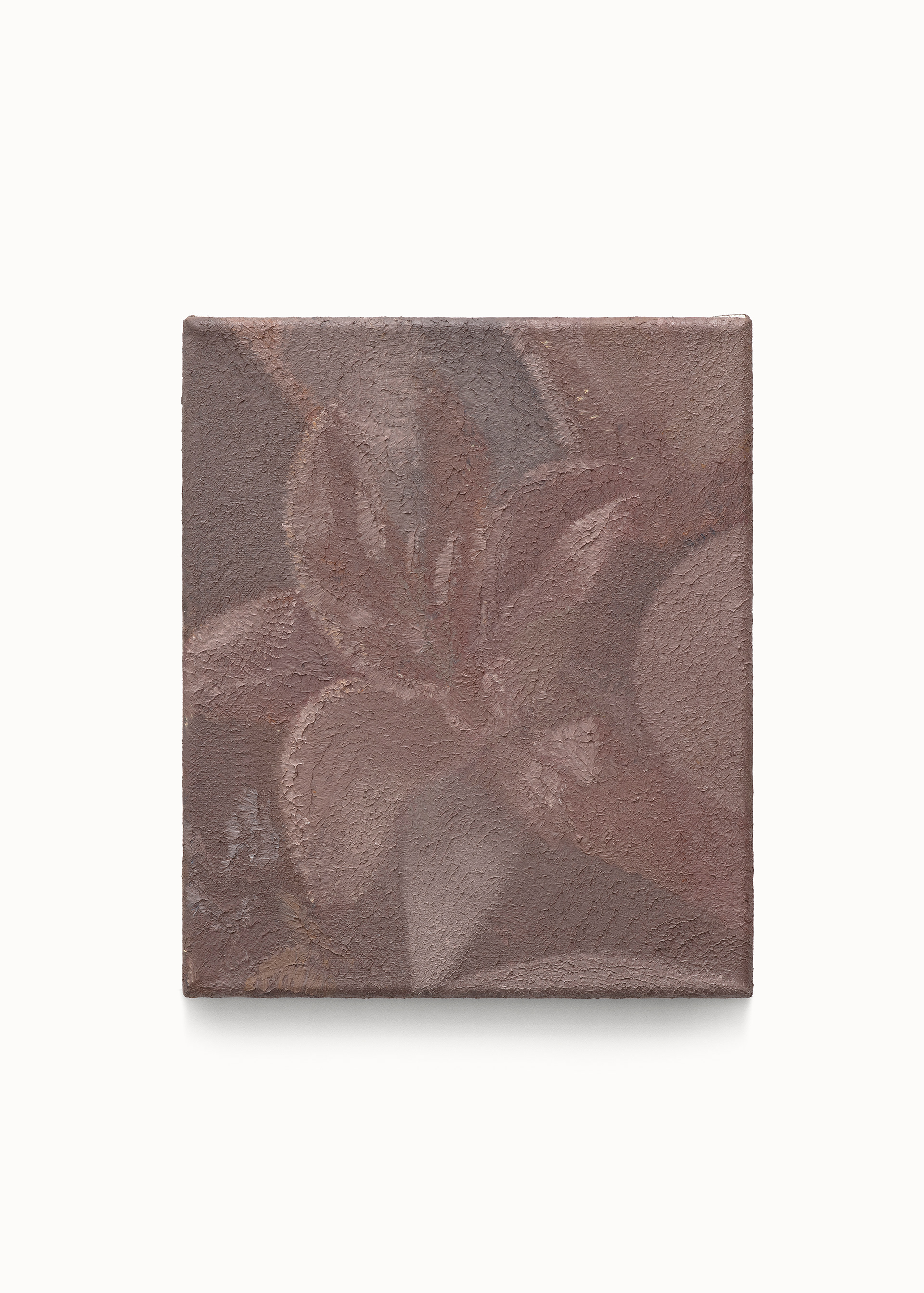
Marta Ravasi, Giglio verticale II, 2023, oil on canvas, 24 x 20 cm / Courtesy of the artist and Galleria Acappella.
E.M : Sometimes, certain paintings represent a motif in very light colors contrasting with the background done in muted tones. The motifs are here reduced to the essential, almost as if they represent the trace of their passage, as if the color were revealing them. Sometimes, the very light color can be imagined as representing the place where the light would come to settle, as in the work "Blossom" (2024). Can you tell us about these works?
M.R : The works created with this approach, which you describe so well, are the freest, fastest and happiest. I typically reach this outcome after trying many different approaches, as if it it’s a sudden shift in direction after exhausting all other options. In my painting Blossom (2024), a group of cherry blossoms emerges from a purple, neutral background. The light petals, defined in an almost elementary manner, are directed with varied brush strokes. One flower, positioned in the top left, is well-composed and tidy, generous and flat, while the others appear slightly distant and perhaps even a little withered. A delicate petal to the right, the whitest and most intense mark is the second point on which the eye rests allowing the composition to rotate and knot the sequence of small expressive gestures.
E.M : There is a closeness and a distance in your paintings. Closeness because most of the time there is only one motif represented on a small canvas or inserted into a composition of few motifs but always set against a bare background. And there is also a distance, because the motifs seem not accessible, disappearing into the background. What is your relationship with these representations? Has the representation of still-life always been evidence for you?
M. R. : When I paint, I am always very physically close to the canvas. The constant work on a small canvas becomes absorbing, numbing me to the point where I feel as though I fall into it. Recently, I have been marking the canvas by moving the paint with a fan brush, creating very small cones of material that, when looked at closely, appear to have fluttering tails. The relationship with the material is very intimate and at times almost alienating, more so than with the representation or subject itself. The sense of distance, however, comes later, when the painting hangs in various parts of the studio, waiting to reveal its direction. During this time, it seems to shift again, gradually drying and evolving.
E.M: Can you describe your usual artistic process for creating your paintings? Do you make sketches or preparatory works, or do you paint directly onto the canvas?
M. R. : I usually begin with a large group of canvases in mind, but I work and complete each painting individually. The process starts with choosing the size of the canvas. Painting occupies my thoughts constantly, even in the background of my most practical thoughts and daily activities. I only recently realized this mechanism: since the birth of my baby, I have dedicated all my conscious thoughts to him, yet painting has continued to evolve on its own, carrying on its dialogue even during moments when I wasn’t fully focused or actively thinking about it.
I never create preparatory sketches; this phase unfolds directly on the canvas. I collect a variety of images–photos I take myself or find online–and then print on A4 sheets, which I ten use freely in the studio. I recently exhibited a series of 24 images printed on photographic paper at ArteFiera Bologna in 2025, with Galleria Acappella.
E.M: What are your main artistic influences on your work in general? And which artist do you most enjoy looking now?
M. R. : I always find pleasure and interest in observing painting, even in practices that may seem far from own. But I also find satisfaction in real life, where my gaze actively follows the surfaces of things, the natural compositions that emerge and the invisible paths of peoples’ gazes and movements. As for artists, I am especially drawn to those who approach their medium with a radical attention, telling the story of their practice through their work
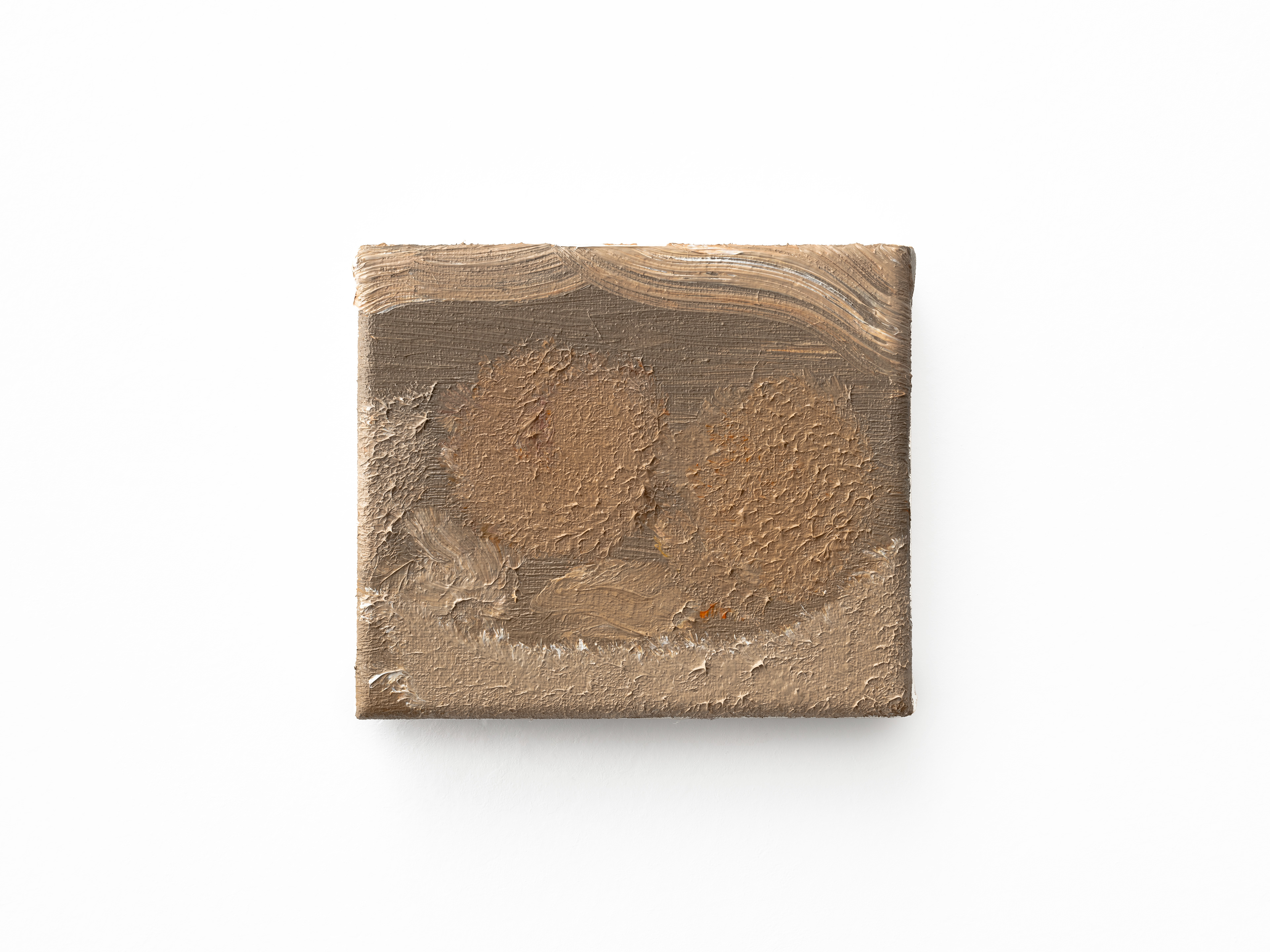
Marta Ravasi, Fruttini, 2025, oil on canvas, 11 x 13 cm / Courtesy of the artist and Galleria Acappella.
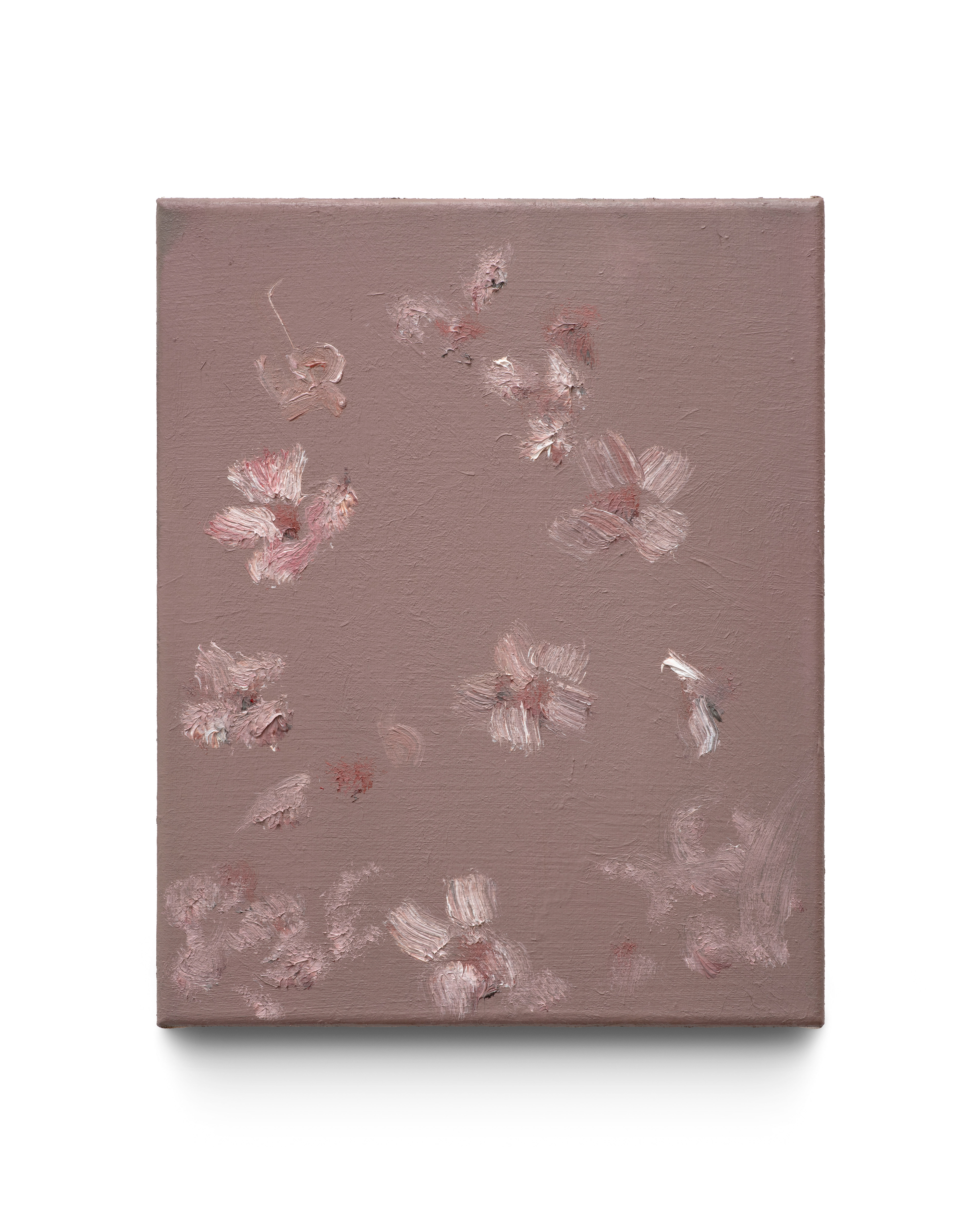
Marta Ravasi, Blossom, 2024 oil on canvas, 26 x 31 cm / Courtesy of the artist and Galleria Acappella.
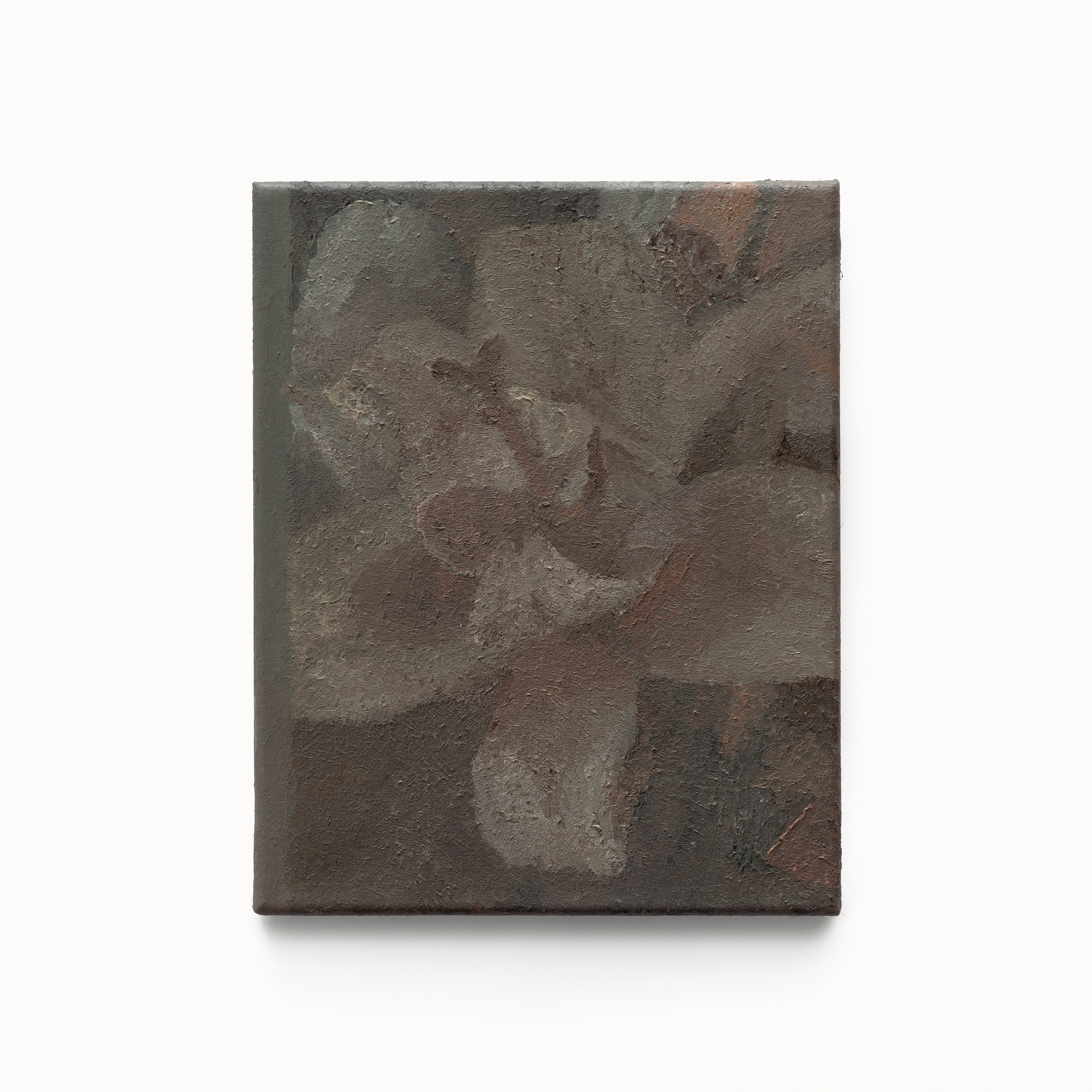
Marta Ravasi, Giglio, 2021, oil on canvas, 29 x 23 cm / Courtesy of the artist and Galleria Acappella.
Marta Ravasi's solo exhibition will be on view at the gallery from
July 8th, 2025.
More info coming soon.
Galerie Elsa Meunier
15, rue Guénégaud 75006 PARIS